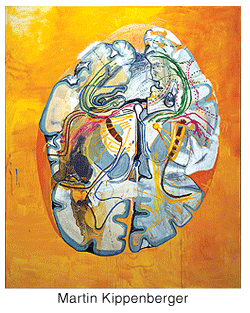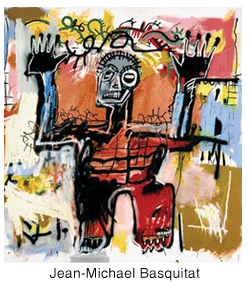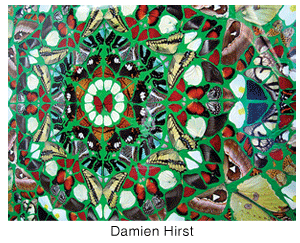- Prelude
- Editorial
- ...Where ever I stumble, let painting lie before me....
- ...Colour guides in its own direction...
- Abstract Art: Popular Myths and History
- Abstract Rhetoric:
- Ram Kumar: A transition from figurative to abstract
- I walk the line
- Exploring a twilight zone
- Articulating the Abstract voice from Madhya Pradesh
- Perception of Abstract in forms
- Confronting Cultures: The Dialectic of Abstraction in Bengal Art
- K.C.S. Paniker and his Words and Symbols
- Dialectics of Abstract Art and Its Indigenous Identity
- Between Ambivalence and Criticism: Why Abstraction?
- Notations and Rhythm in Space: Sushen Ghosh
- Victorian Era: Eclectic Furniture
- Patek Philippe : an overview
- The “Theme Pandals” of Durga Pujo: An Unexplored Discourse
- Musings on Music
- Butterflies in the stomach… still
- Contemporary Art Market Report 2009-10
- Artist Index and Statistics
- Auction Reports
- Recent works of Pavan kumar D. - In the Journey of Learning things
- Narrating “with a pinch of salt” Paintings of K.P.Reji
- Reclaiming an artist of true calibre
- Musings from Chennai
- An Annual Homage..
- Art Events Kolkata: September-October 2010
- Mumbai Art Sighting
- Art Bengaluru
- Unveiling the next in line
- Preview
- In the News
- Sotheby’s : Important Watches Hong Kong
ART news & views
Contemporary Art Market Report 2009-10
Volume: 3 Issue No: 10 Month: 11 Year: 2010
Artprice has recently published its annual art-market report Contemporary Art Market 2009/2010. And the most interesting passage comes at the very beginning.
 “The most expensive and speculative areas of the Contemporary market have been abandoned, dragging revenue auction figures into negative territory once again. In fact, this past year Contemporary art auctions posted a total of 48 million-plus results (in euros) vs. 72 the previous year and 120 during the ultra-prosperous period before that (July 2007 to June 2008). Likewise, the total auction revenue from Contemporary art contracted 23% vs. the previous 12-month period and was down 54% vs. the record 2007/2008 period.
“The most expensive and speculative areas of the Contemporary market have been abandoned, dragging revenue auction figures into negative territory once again. In fact, this past year Contemporary art auctions posted a total of 48 million-plus results (in euros) vs. 72 the previous year and 120 during the ultra-prosperous period before that (July 2007 to June 2008). Likewise, the total auction revenue from Contemporary art contracted 23% vs. the previous 12-month period and was down 54% vs. the record 2007/2008 period.
These reduced revenue figures point only at one thing that the market has gone into a top-end meltdown. However, it does not suggest a fall in acquisitive appetites. Because, as Artprice has observed, “While investors have become wary of fashion-following and speculative price bubbles on signatures that have not yet withstood the test of time, demand has not weakened for the relatively well established signatures or for reasonably priced work.” Artprice notes that “Three times more Contemporary works were sold between July 2009 and June 2010 than six years earlier: more than 30,300 lots (one thousand more than in 2007-2008) for a total revenue of €443m. Of course, this is far behind the € 975.2m total that the market generated at its peak (2007/2008), but the price index of Contemporary art is just as dynamic in terms of growth: +5.4% in 1H 2010 after a contraction of nearly 42.8% between January 1,  2008 and the end of the year 2009.
2008 and the end of the year 2009.
The other market watchdog ArtTactic though presents a more optimistic picture. In its sum-up of the annual report, ArtTactic notes: “The US and European contemporary art markets have staged a solid recovery, with New York taking the lead in November 2009. Recent February sales in London came in above expectations and the total value was more than double than June 2009.”
However, ArtTactic does not paint a very rosy picture for the Indian contemporary art market. “The Indian art market went through a tough period in 2009, and although confidence is coming back in both the Modern and Contemporary Indian markets, low auction volume and lack of recovery in contemporary art prices, heightens the uncertainty around the contemporary market's short term outlook.”
 Both Artprice and ArtTactic though agree on one trend that the Chinese art market, with its headquarters in Hong Kong, has seen the best recoveries. ArtTactic notes that “The contemporary Chinese art market is still considerably lower than the peak of the market, but renewed confidence in the sector is likely to have a positive impact in 2010.”
Both Artprice and ArtTactic though agree on one trend that the Chinese art market, with its headquarters in Hong Kong, has seen the best recoveries. ArtTactic notes that “The contemporary Chinese art market is still considerably lower than the peak of the market, but renewed confidence in the sector is likely to have a positive impact in 2010.”
Artprice's observation in this case is more direct and supported by figures “Three market places have posted distinctly positive Contemporary art sales revenue for the past year: Germany, with revenue up 32%, the United States (+17%) and China (+9.4%).
The winner in the global competition is in fact China which now has five auction houses ranked in the world's top 15 by revenue (from Fine Art, all periods) and is maintaining its market magnetism, attracting more and more cultural investors (for example, the Gagosian gallery is opening a branch in Hong Kong).”
 The Middle Eastern market though is yet to recover from the blow, with “total sales of Arab and Iranian contemporary art down (by) 11%, whilst the modern market (is seeing) volumes falling 56% from the peak of the market. Average prices for contemporary Arab and Iranian art is down 37%, with Modern prices down 30% from November 2008. However, we expect the pre-boom interest in Middle-Eastern art to pick up again in 2010 alongside most of the other global markets,” opines ArtTactic.
The Middle Eastern market though is yet to recover from the blow, with “total sales of Arab and Iranian contemporary art down (by) 11%, whilst the modern market (is seeing) volumes falling 56% from the peak of the market. Average prices for contemporary Arab and Iranian art is down 37%, with Modern prices down 30% from November 2008. However, we expect the pre-boom interest in Middle-Eastern art to pick up again in 2010 alongside most of the other global markets,” opines ArtTactic.
What is noteworthy though is the common opinion held by both watchdogs in the days of new media and installation art that painting is still the highest priced segment of the Contemporary Art Market, with Jean-Michael Basquitat, Richard Prince, Christopher Wool, Jeff Koons, Chen Yifei, Zeng Fanzhi, Zhou Chunya, Peter Doig, Damien Hirst and Martin Kippenberger forming the top-10 list.